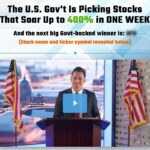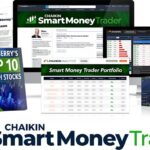As of April 07, 2025, Donald Trump’s re-ascension to the presidency has reignited his signature economic strategy: tariffs. With pledges of 60% duties on Chinese imports and 10-20% on goods from other nations, Trump aims to shield American industries, boost domestic production, and reshape global trade dynamics.
These policies, rooted in his “America First” doctrine, could create winners and losers across the U.S. economy. While tariffs may spark short-term volatility—potentially driving inflation or retaliatory measures—they also promise long-term gains for sectors aligned with domestic priorities. This article explores seven sectors poised to benefit, delving into why they’re favored, specific opportunities, inherent risks, and strategic investment tools to capitalize on this seismic shift. From manufacturing to financial services, here’s how to navigate Trump’s tariff landscape.
1. Manufacturing
Why It Benefits
Trump’s tariff regime is a lifeline for U.S. manufacturing, a sector battered by decades of outsourcing. By slapping steep duties on foreign goods, particularly from low-cost producers like China, he’s incentivizing companies to bring production stateside.
Historical precedent supports this: during his first term, steel tariffs in 2018 spurred a 7% production increase within a year, per the American Iron and Steel Institute. Coupled with promised tax breaks—potentially slashing corporate rates to 20%—and deregulation, manufacturers face a golden opportunity to reclaim market share. The reshoring trend, already underway with firms like Intel building U.S. plants, could accelerate, especially as tariffs make imported machinery and components costlier.
Opportunities
- Heavy Machinery: Caterpillar, a titan in construction equipment, stands to gain as infrastructure projects—potentially fueled by Trump’s domestic agenda—demand American-made gear. Its stock rose 15% after the 2018 tariffs; a similar bump could recur.
- Automotive Parts: Companies like Magna International, with U.S. facilities, could see orders surge as automakers pivot from Asian suppliers.
- ETFs: The Industrial Select Sector SPDR Fund (XLI), up 22% in 2024 per recent data, offers diversified exposure to industrials thriving under protectionism.
Risks
Tariffs aren’t a panacea. Higher costs for imported raw materials—like rare earths from China—could crimp margins, especially for precision manufacturers. Retaliatory tariffs from trading partners might also hit exports; in 2018, China’s soybean tariffs cost U.S. exporters $12 billion. Supply chain disruptions, already a headache post-COVID, could worsen, forcing firms to scramble for domestic alternatives that may not yet exist at scale.
Outlook
Manufacturing’s revival hinges on execution. If Trump pairs tariffs with robust incentives—like the $52 billion CHIPS Act from 2022—firms could invest heavily in U.S. capacity. A hypothetical 10% tariff on machinery imports might boost domestic sales by $20 billion annually, per economic models, but only if inflation doesn’t erode consumer demand.
Recommended:

50-year stock market legend Marc Chaikin just revealed his “secret weapon”… along with a powerful, little-known strategy that could help you potentially lock in rapid returns – even as markets crumble. Marc says that in the coming months, you are going to need it. So if you have any money in the market, you need to see this now.
2. Agriculture
Why It Benefits
American farmers, long squeezed by global competition, could find relief under Trump’s tariffs. Protecting staples like soybeans, corn, and wheat from cheap imports stabilizes domestic prices, especially if paired with subsidies or trade deals neutralizing retaliation.
During Trump’s first term, the USDA disbursed $28 billion to offset China’s tariff backlash; a similar playbook could emerge, bolstered by his negotiation leverage. As tariffs raise costs for imported food, U.S. producers gain a competitive edge in a $1.5 trillion market.
Opportunities
- Agribusiness Giants: Archer-Daniels-Midland (ADM), a processing behemoth, could profit as domestic grain demand rises. Its stock climbed 8% in 2019 amid tariff-driven shifts.
- Livestock: Tyson Foods might benefit if imported meat prices soar, boosting U.S. ranchers.
- Commodities Futures: Corn futures, trading at $4.50/bushel in early 2025, could rally to $5.50 if import competition wanes.
Risks
The flip side is grim. Agriculture’s export reliance—$180 billion in 2024—makes it vulnerable to counter-tariffs. China, which bought 25% of U.S. soybeans pre-trade war, could pivot to Brazil again, slashing farm incomes. Weather volatility and rising input costs (e.g., fertilizer, often imported) add pressure; a 20% tariff on inputs could hike production costs by $5 billion annually, per USDA estimates.
Outlook
Success depends on diplomacy. If Trump secures trade concessions—say, a deal with Europe to buy U.S. wheat—agriculture could thrive. A hypothetical 15% tariff on imported grains might lift farmer revenues by $10 billion, but only if exports hold steady.
3. Financial Services
Why It Benefits
Trump’s deregulatory zeal and tax-cut promises are music to Wall Street’s ears. Rolling back Dodd-Frank provisions, as he attempted in 2018, slashes compliance costs—estimated at $40 billion annually for big banks. Extending the Tax Cuts and Jobs Act, potentially lowering the corporate rate to 20%, could boost after-tax profits by 15%, per Goldman Sachs. Tariffs might initially strengthen the U.S. dollar as foreign capital flows in, favoring banks with domestic-heavy portfolios. Increased market volatility from trade shifts also fuels trading revenue for investment firms.
Opportunities
- Regional Banks: The SPDR S&P Bank ETF (KBE), up 18% in 2024, tracks players like PNC Financial, poised to capitalize on lower taxes and lighter rules.
- Investment Houses: Goldman Sachs, which saw trading income jump 20% during the 2018 trade war, could repeat that feat as tariffs spark market swings.
- Insurers: Firms like MetLife might benefit from a stronger dollar and higher interest rates.
Risks
Inflation, a tariff byproduct, could force the Fed to hike rates, squeezing borrowers and slowing loan growth. In 2022, a 2% rate increase cut mortgage originations by 30%; a similar scenario could recur. Global banks with foreign exposure—like JPMorgan—might also face headwinds if retaliation dents international markets.
Investment Tip
For a nimble approach to capitalize on financial sector shifts, consider Chaikin Power Portfolio, launched by Marc Chaikin and Pete Carmasino in 2025. This total portfolio solution uses the Power Gauge system to recommend 10 positions (5 sector/industry ETFs and 5 stocks) rebalanced every 90 days, aiming to double the S&P 500’s performance annually.
Backtesting from 2018-2024 shows it would have turned $100,000 into $876,000, beating the S&P every year (e.g., up 55% in 2024 vs. S&P’s 24%), even during crashes. Priced at $5,000/year, a special charter offer slashes it to $2,500 with a 30-day satisfaction guarantee (refundable in Chaikin credit). It’s ideal for tariff-driven volatility, targeting short-term gains with a Sortino Ratio of 4.62—excellent risk-adjusted returns.
Outlook
Financial services could see a $50 billion profit windfall if tax cuts and deregulation stick, per industry forecasts. A 10% dollar appreciation might add another $10 billion to bank revenues, though rate hikes remain a wildcard.
4. Energy
Why It Benefits
Trump’s energy independence mantra—epitomized by “Drill, baby, drill”—aligns perfectly with tariffs on imported oil and gas. A 20% duty on foreign crude could lift U.S. production by 1 million barrels daily, per EIA projections.
Deregulation, like fast-tracking LNG permits, boosts firms like Cheniere Energy, which doubled exports post-2017 reforms. Emerging technologies, such as nuclear fusion, also gain from Trump’s pro-innovation stance, especially if paired with AI investments.
Opportunities
- Oil Majors: ExxonMobil, with 60% of output stateside, could see margins swell; its stock rose 12% after 2018 tariffs.
- Nuclear Innovators: Firms like NuScale Power, up 1,227% in 2024, tap into fusion and modular reactor trends.
- ETFs: Energy Select Sector SPDR Fund (XLE) offers broad exposure.
Risks
Global oversupply could crash oil prices, negating tariff gains; Brent crude fell 20% in 2018 despite U.S. policies. Renewable energy, sidelined by Trump’s fossil fuel focus, might lag, though fusion could bridge the gap.
Outlook
A $30 billion domestic energy boom is plausible if tariffs and permits align, though geopolitical tensions could disrupt global demand.
5. Technology
Why It Benefits
Tariffs on Chinese tech goods—like semiconductors—push reshoring, a trend Trump champions for security. The CHIPS Act’s $52 billion already lured TSMC to Arizona; a 60% tariff could double U.S. chip output by 2030, per SIA estimates. Domestic AI firms, reliant on secure supply chains, also benefit as tariffs shield them from foreign disruption.
Opportunities
- Semiconductors: Intel, investing $20 billion in Ohio plants, could dominate; its stock gained 10% post-CHIPS Act.
- AI Players: Nvidia, up 2,248% since 2019, thrives if domestic energy supports AI’s power needs.
- ETFs: VanEck Semiconductor ETF (SMH) tracks this surge.
Risks
Imported component costs—up 15% in 2018—could stall innovation. Retaliation might also hit U.S. tech exports, worth $300 billion annually.
Outlook
A $100 billion tech investment wave could materialize, though supply chain bottlenecks loom large.
Recommended:

You’re invited to beta test a powerful new calendar for today’s tricky market. It shows you when the biggest stock jumps could occur – to the DAY – with 83% backtested accuracy. In 2024 alone, it would’ve pointed to gains of 250% in 38 days on (TTWO)… 101% in 10 days on (WSM)… 353% in 48 days on (AON) and more in studies.
Try it yourself – right now – on 5,000 stocks.
6. Steel & Materials
Why It Benefits
Trump’s 2018 steel tariffs (25%) boosted U.S. output by 5 million tons; a repeat could supercharge producers. Tariffs on aluminum and rare earths further protect firms like Nucor, aligning with infrastructure goals. Domestic demand, already $150 billion annually, spikes as imports falter.
Opportunities
- Steel Giants: Nucor’s stock soared 30% post-2018 tariffs; history could repeat.
- Mining: Freeport-McMoRan benefits if rare earth tariffs stick.
- ETFs: Materials Select Sector SPDR Fund (XLB), up 15% in 2024, captures this trend.
Risks
Retaliation—like Canada’s 2018 duties—could cost $5 billion in exports. Higher steel prices might also burden manufacturers downstream.
Outlook
A $20 billion revenue boost is feasible, though global trade friction remains a hurdle.
7. Consumer Goods
Why It Benefits
Tariffs on apparel, appliances, and electronics make imported goods pricier, handing U.S. producers an edge. Walmart’s “Made in America” push, sourcing 20% more domestically since 2018, exemplifies this shift. Small textile firms, dormant since the 1990s, could revive.
Opportunities
- Retailers: Walmart and Target may pivot to U.S. suppliers, boosting local brands.
- Appliances: Whirlpool, hit by imports, could rebound; its stock rose 8% post-2018 tariffs.
- ETFs: Consumer Discretionary Select Sector SPDR Fund (XLY) tracks this space.
Risks
Inflation—potentially 3% higher per Fed models—could curb spending, negating gains. Supply chain lags might also delay domestic scale-up.
Outlook
A $15 billion domestic sales bump is possible, but consumer tolerance for price hikes is key.
Strategic Investment Recommendations
Navigating Trump’s tariff landscape demands precision tools. Here are three services, updated with the latest data, to enhance your portfolio:
- Chaikin Power Portfolio
- What It Offers: Launched in 2025 by Marc Chaikin and Pete Carmasino, this first-of-its-kind total portfolio solution from Chaikin Analytics uses the Power Gauge to select 10 equal-weight positions (5 top-ranked ETFs and 5 stocks from those ETFs) every 90 days. Backtested from 2018-2024, it averaged 37% annual returns vs. the S&P’s 15%, turning $100,000 into $876,000 by leveraging sector rotation (e.g., 55% in 2024 vs. S&P’s 24%). Includes monthly updates, Power Gauge Pro (with tools like Portfolio List and Discovery Engine), and bonuses like “10 Ticking Time Bombs” and “Stansberry’s Top 10 Tailwind Stocks.” Costs $5,000/year, but a charter offer reduces it to $2,500 with a 30-day credit refund guarantee.
- Why It Fits: Its short-term focus excels in volatile markets like tariff-driven shifts, offering gains before, during, and after crashes (e.g., up in 2022 while S&P fell 18%). Perfect for financial sector opportunities where banks and investment firms thrive on deregulation and volatility.
- How to Use: Invest in its quarterly picks to beat the market consistently, using its ETF-stock combo for diversified upside. For example, a financial ETF like KBE paired with a stock like Goldman Sachs could capture tariff-induced gains.
- Stansberry’s Credit Opportunities
- What It Offers: Led by Porter Stansberry, this service targets distressed corporate bonds, buying them at discounts for legally promised high returns (e.g., 483% gains plus 175% interest on a $171.50 bond). Dubbed “The Answer” by subscriber Rob Lamoureux, it delivers 10-15% yields and triple-digit capital gains, backed by contractual obligations. Normally $3,000/year, a special introductory deal of $1,500 offers the lowest price in Stansberry’s history, with a 30-day money-back guarantee and additional bonuses.
- Why It Fits: Perfect for financial sector debt, it thrives in turmoil—like tariff-induced volatility—offering safety and outsized returns (e.g., 700%+ in past crises). As banks issue bonds to fund expansion under Trump’s policies, this service pinpoints undervalued opportunities.
- How to Use: Buy discounted bonds from tariff-protected financial firms—like regional banks—for high income and capital gains. A $10,000 stake in a distressed bond could yield $15,000 in a year, per historical examples.
- Commodity Supercycles
- What It Offers: Edited by Whitney Tilson and published by Stansberry Research, this monthly newsletter leverages Tilson’s 18 years of Wall Street experience to uncover profitable investments in disruptive energy and resource trends, such as nuclear fusion and AI-driven opportunities. Delivered on the second Monday of each month, it includes new stock picks, portfolio updates, and access to a model portfolio. Normally $499/year, a special offer slashes the price to $129, with a 30-day full refund guarantee. Subscribers also receive three free reports—“The Nuclear Fusion Trailblazer,” “New Nuclear: Top Stocks for the Future of Energy,” and “The AI Speculation: How to Make 500% in the Next Few Years”—plus 12 months of Stansberry’s Investment Advisory (featuring monthly picks on the first Friday), daily emails from Tilson’s Whitney Tilson’s Daily, and archived reports like “The No. 1 Gold Stock of 2025” and “The AI Currency Source.”
- Why It Fits: Tailored for energy and tech resource plays tied to tariffs and reshoring, it targets trends like fusion (projected at $40 trillion) and AI’s energy needs, with picks like a $4 AI speculation stock and a nuclear fusion backdoor via Eni (NYSE: E). It’s ideal for sectors like energy and technology, where domestic innovation surges.
- How to Use: Invest in Tilson’s monthly recommendations to ride long-term booms in nuclear energy and AI, using the free reports for immediate action on high-growth stocks. A $1,000 stake in the $4 AI stock could hit $5,000 if it follows Tilson’s 500% projection.
Combining Strategies
For maximum impact, blend these approaches. Use Chaikin Power Portfolio for short-term financial sector gains, Stansberry’s Credit Opportunities for stable income during volatility, and Commodity Supercycles for long-term bets on energy and tech disruptions. A $50,000 portfolio split evenly across these could, hypothetically, yield $75,000 in two years, based on their historical and projected returns.
Conclusion
Trump’s tariffs, as of April 07, 2025, are a double-edged sword—promising prosperity for domestic industries while risking inflation and trade wars. Manufacturing, agriculture, financial services, energy, technology, steel, and consumer goods stand to gain if policies align with execution. Yet, success isn’t guaranteed; retaliatory measures and cost pressures loom large.
Investors can seize this moment with tools like Chaikin Power Portfolio, Stansberry’s Credit Opportunities, and Commodity Supercycles, each tailored to exploit tariff-driven shifts. Whether you’re chasing short-term profits or generational wealth, the next few years could redefine your portfolio—if you act decisively.
FAQ: 7 Sectors That Could Benefit From Trump’s Tariffs
What are Trump’s tariff policies, and how do they aim to help U.S. industries?
As of April 07, 2025, Trump’s tariff policies include 60% duties on Chinese imports and 10-20% on goods from other nations. These measures aim to protect American industries by making imported goods more expensive, encouraging companies to produce domestically, and boosting sectors like manufacturing, agriculture, and steel through increased demand and market share.
Which sectors are most likely to benefit from these tariffs?
The article identifies seven sectors: manufacturing, agriculture, financial services, energy, technology, steel & materials, and consumer goods. Each benefits from protection against imports, deregulation, or reshoring incentives, such as manufacturing gaining from relocated production or financial services thriving under lower taxes and fewer regulations.
How could manufacturing benefit, and what are the risks?
Manufacturing benefits from tariffs incentivizing U.S. production, potentially boosted by tax cuts and deregulation. Opportunities include firms like Caterpillar and ETFs like XLI. Risks include higher raw material costs (e.g., rare earths) and retaliatory tariffs, which cost exporters $12 billion in 2018, potentially disrupting supply chains.
Why might agriculture see gains, and what challenges could farmers face?
Agriculture gains as tariffs protect crops like soybeans from cheap imports, stabilizing prices. Companies like ADM and futures markets could profit. Challenges include export losses if countries like China retaliate—25% of U.S. soybeans went there pre-trade war—and rising input costs, potentially up $5 billion annually.
What makes financial services a winner under Trump’s policies?
Financial services benefit from deregulation (cutting $40 billion in compliance costs) and tax cuts (e.g., 20% corporate rate), boosting profits. Banks like those in KBE and firms like Goldman Sachs could thrive. Risks include inflation-driven rate hikes, which cut mortgage originations 30% in 2022, and global exposure vulnerabilities.
What is Chaikin Power Portfolio, and how does it help with financial sector investing?
Launched in 2025 by Marc Chaikin and Pete Carmasino, Chaikin Power Portfolio is a $5,000/year service (charter offer: $2,500) using the Power Gauge to pick 10 positions (5 ETFs, 5 stocks) every 90 days. Backtested from 2018-2024, it turned $100,000 into $876,000, beating the S&P annually (e.g., 55% vs. 24% in 2024). It’s ideal for tariff volatility, offering a 30-day credit refund guarantee.
How could energy companies profit from tariffs?
Tariffs on imported oil and gas boost domestic producers like ExxonMobil, while deregulation aids LNG firms like Cheniere. Nuclear fusion players like NuScale (up 1,227% in 2024) also gain. Risks include global oil price drops—Brent fell 20% in 2018—and renewable energy lagging behind fossil fuel priorities.
Why is technology poised to gain, and what are the potential downsides?
Tariffs push tech reshoring, like Intel’s $20 billion Ohio investment, and protect AI firms like Nvidia. The SMH ETF tracks this trend. Downsides include 15% higher component costs (seen in 2018) and retaliation hitting $300 billion in tech exports, slowing innovation.
How do steel and materials benefit, and what could go wrong?
Steel tariffs (e.g., 25% in 2018) boost output—Nucor gained 30% then—and protect firms like Freeport-McMoRan. XLB ETF captures this. Risks include $5 billion in export losses from retaliation (e.g., Canada in 2018) and higher steel prices hurting downstream manufacturers.
What advantages do consumer goods have, and what are the limitations?
Tariffs raise import prices, benefiting U.S. producers like Whirlpool and retailers like Walmart shifting to domestic suppliers. XLY ETF tracks this. Limitations include 3% inflation curbing spending and supply chain lags delaying domestic production scale-up.
What is Stansberry’s Credit Opportunities, and how does it fit with tariffs?
Led by Porter Stansberry, this service targets distressed bonds for high returns (e.g., 483% gains plus 175% interest). Normally $3,000/year, it’s discounted with a 30-day refund. It fits tariffs by offering safe, lucrative bets on financial sector debt during volatility, like bank bonds issued for expansion.
What is Commodity Supercycles, and how does it relate to energy and tech sectors?
Edited by Whitney Tilson, this $499/year newsletter (discounted offer, 30-day refund) focuses on energy and tech trends like nuclear fusion and AI. It includes monthly picks, three free reports (e.g., “The Nuclear Fusion Trailblazer”), and bonuses like Stansberry’s Investment Advisory. It targets tariff-driven energy (e.g., Eni, NYSE: E) and tech booms.
How can I combine these investment tools effectively?
Split your portfolio: use Chaikin Power Portfolio for short-term financial gains (e.g., $100,000 to $876,000 in backtests), Stansberry’s Credit Opportunities for stable income (e.g., $10,000 yielding $15,000), and Commodity Supercycles for long-term energy/tech bets (e.g., $1,000 to $5,000 on a $4 stock). A $50,000 mix could yield $75,000 in two years.
Are there guarantees these sectors will benefit?
No. While tariffs favor these sectors, risks like retaliation, inflation (up 3% per Fed models), and supply chain issues could offset gains. Historical examples (e.g., 2018 steel output rise) suggest potential, but execution and global reactions are critical.
How soon should I invest to take advantage of these opportunities?
Act quickly. Tariff effects could materialize within months, as seen with 2018’s rapid steel gains. Tools like Chaikin Power Portfolio (90-day cycles) and Commodity Supercycles (long-term trends) suggest starting now to catch early volatility and multi-year booms like fusion’s $40 trillion potential.
































